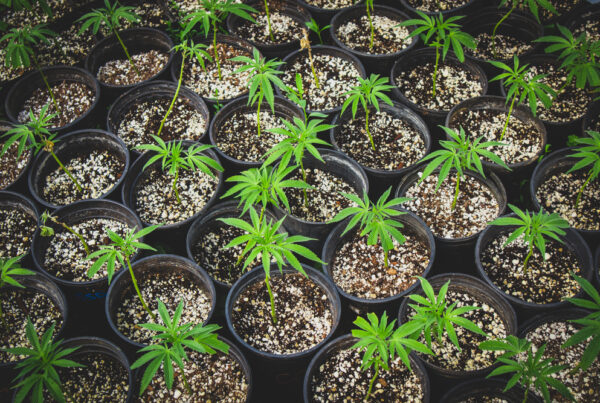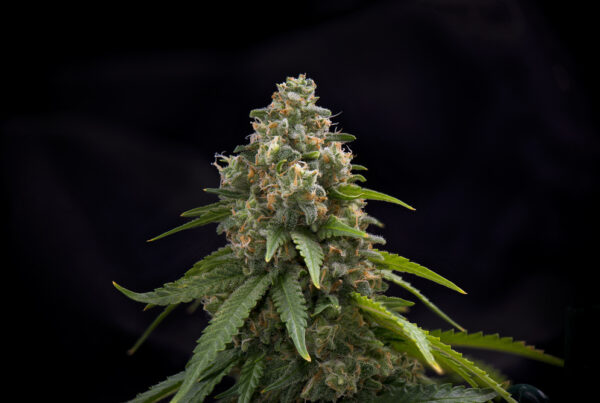In recent years, there has been a significant shift in the perception and legalization of cannabis. From being a taboo subject to a thriving industry, cannabis has become an integral part of our cultural landscape. Interestingly, one area where cannabis has had a profound impact is the world of movies. From classic films to contemporary cinema, cannabis has been portrayed, explored, and even celebrated on the silver screen. In this blog post, we will delve into the cultural perspective of cannabis in movies, examining its portrayal in classic films, its presence in contemporary cinema, its role in documentary filmmaking, and its influence on creativity in the film industry. Join us on this captivating journey as we explore the intriguing relationship between cannabis and movies and how it has shaped our cultural understanding of this once-controversial plant.

Introduction: The Role of Cannabis in Cinema
Cinema has always been a powerful medium for reflecting and influencing societal attitudes and behaviors. Throughout the history of film, cannabis has played a significant role in shaping narratives, characters, and cultural conversations. In this section, we will explore the role of cannabis in cinema and its impact on the portrayal and perception of this plant.
Movies have the ability to capture the essence of a culture or time period, and cannabis has often been used as a storytelling device to convey certain themes, experiences, and subcultures. Whether it is used to depict countercultural movements, explore the psychedelic experience, or simply add an element of rebellion or relaxation, cannabis has become a recurring motif in films across various genres.
Furthermore, the portrayal of cannabis in movies has evolved over time, reflecting shifting societal attitudes and legal frameworks. From the early days of cinema, when cannabis was demonized and associated with deviant behavior, to the present, where it is increasingly being decriminalized and even legalized in some places, the cinematic representation of cannabis has mirrored the changing cultural landscape.
By examining the role of cannabis in cinema, we can gain insights into how this plant has been used to comment on social issues, challenge norms, and shape popular culture. From classic films to contemporary blockbusters, the influence of cannabis in cinema is undeniable. So, let us dive into the world of cannabis and movies, and explore the fascinating cultural perspective that unfolds on the silver screen.
Portrayal of Cannabis in Classic Movies
Classic movies have played a significant role in shaping the perception of cannabis in popular culture. In this section, we will explore how cannabis has been portrayed in classic films, examining the cultural context, iconic scenes, and the impact these movies have had on the perception of cannabis.
The 1960’s and 70’s: A Shift in Cannabis Representation
During the countercultural revolution of the 1960s and 70s, cannabis began to emerge as a symbol of rebellion, freedom, and nonconformity. This era saw the rise of films that embraced the exploration of altered states of consciousness, often accompanied by the use of cannabis. Movies such as “Easy Rider” (1969), directed by Dennis Hopper, showcased the protagonist’s journey across America, fueled by marijuana and a desire for freedom. This film, along with others like “Reefer Madness” (1936), “The Trip” (1967), and “Alice’s Restaurant” (1969), reflected the changing attitudes towards cannabis during this transformative period.
Iconic Cannabis-Related Scenes in Classic Movies
Classic movies have produced several memorable scenes that prominently feature cannabis. One such scene is the marijuana-smoking session in “Up in Smoke” (1978), directed by Lou Adler and starring Cheech Marin and Tommy Chong. This comedy film not only showcased the recreational use of cannabis but also highlighted the comedic potential that the plant offered.
Another iconic example is the “Stoner Circle” scene in “Dazed and Confused” (1993), directed by Richard Linklater. Set in the 1970s, the film portrays a group of high school students engaging in cannabis consumption and philosophical discussions, capturing the spirit of youthful rebellion and camaraderie.
Impact of Classic Movies on Cannabis Perception
Classic movies have had a profound impact on the perception of cannabis, both positively and negatively. While some films portrayed cannabis as a harmless recreational activity or a catalyst for creative thinking, others perpetuated negative stereotypes and reinforced the stigma associated with cannabis use.
For instance, the cult classic film “Reefer Madness” (1936) portrayed cannabis as a dangerous and addictive drug that leads to madness and moral corruption. This film, originally intended as a cautionary tale, unintentionally became a source of amusement and ridicule due to its sensationalized portrayal.
On the other hand, films like “Harold and Kumar Go to White Castle” (2004) and “Pineapple Express” (2008) embraced cannabis culture with humor and portrayed cannabis users as relatable and humorous characters. These films helped to normalize cannabis use and challenge the negative stereotypes associated with it.
In summary, the portrayal of cannabis in classic movies has had a significant impact on shaping cultural perceptions. Whether through rebellious countercultural narratives or comedic portrayals, classic films have played a pivotal role in influencing how society views cannabis.
Cannabis in Contemporary Cinema
Contemporary cinema continues to explore the theme of cannabis, reflecting the changing attitudes and legal landscape surrounding this plant. In this section, we will delve into how cannabis is portrayed in modern movies, examining the films that place cannabis at the center of their narratives, the evolving depiction of cannabis in mainstream cinema, and the influence of cannabis legalization on movie portrayals.
Modern Movies that Center on Cannabis
In recent years, there has been a rise in movies that revolve around the theme of cannabis. These films not only explore the recreational use of cannabis but also delve into its medicinal properties, its role in spirituality, and the impact it has on individuals and communities.
One notable example is “Half Baked” (1998), directed by Tamra Davis and starring Dave Chappelle. This stoner comedy follows the misadventures of four friends who must raise money to bail their incarcerated friend out of jail after he accidentally kills a diabetic police horse by feeding it junk food. The film humorously explores the cannabis subculture and the challenges faced by its protagonists.
Another noteworthy film is “Pineapple Express” (2008), directed by David Gordon Green and starring Seth Rogen and James Franco. This action-comedy revolves around a process server and his marijuana dealer who find themselves on the run after witnessing a murder. The film combines thrilling chase sequences with comedic moments, showcasing the bond between the characters and the influence of cannabis on their journey.
How Contemporary Cinema Reflects Changing Attitudes Towards Cannabis
Contemporary cinema reflects the evolving perception of cannabis in society. Filmmakers are increasingly portraying cannabis use in a more normalized and positive light, challenging the long-standing stereotypes and stigmas associated with the plant.
For example, the film “The Big Lebowski” (1998), directed by the Coen brothers, features “The Dude,” a laid-back character played by Jeff Bridges, who smokes cannabis throughout the film. Rather than depicting him as a lazy or unproductive individual, the film highlights The Dude’s wisdom, philosophical outlook, and ability to navigate tricky situations while maintaining his unique perspective.
Additionally, movies like “Knocked Up” (2007) and “This Is the End” (2013), both directed by Seth Rogen and Evan Goldberg, portray cannabis use as a common social activity among friends. These films present cannabis consumption as a natural part of adult life, challenging the notion that it is solely associated with deviant behavior or laziness.
Influence of Cannabis Legalization on Movie Portrayals
The increasing legalization and decriminalization of cannabis in various parts of the world have had a significant impact on how the plant is portrayed in contemporary cinema. Filmmakers now have the opportunity to explore cannabis without the fear of legal repercussions, allowing for more nuanced and diverse narratives around this subject.
With the legalization of cannabis, films like “American Ultra” (2015), directed by Nima Nourizadeh, have been able to explore the theme of cannabis without the need for criminalization or retribution. The film follows the story of a stoner who discovers that he is actually a highly trained government agent, blurring the lines between cannabis use and heroism.
Moreover, documentaries like “The Culture High” (2014), directed by Brett Harvey, have emerged to examine the social, economic, and political aspects of cannabis legalization. These films provide a platform for showcasing the complexities surrounding cannabis and its impact on society.
In conclusion, contemporary cinema reflects the changing attitudes towards cannabis, portraying it in a more diverse and nuanced manner. Movies that center on cannabis explore its recreational and medicinal aspects, while mainstream films challenge stereotypes and depict cannabis use as a normal part of adult life. With the legalization of cannabis, filmmakers can now delve deeper into the cultural, social, and political implications of this plant, offering a more comprehensive perspective on its role in society.
Cannabis and Documentary Filmmaking
Documentary filmmaking has played a crucial role in shedding light on various aspects of cannabis culture, industry, and its impact on society. In this section, we will explore the intersection of cannabis and documentary filmmaking, examining the documentaries that delve into cannabis culture, investigate the cannabis industry, and the role of documentaries in destigmatizing cannabis.
Documentaries Exploring Cannabis Culture
Numerous documentaries have delved into the rich and diverse aspects of cannabis culture, offering a deep dive into the history, subcultures, and personal stories associated with this plant. These films provide a platform for individuals to share their experiences, challenges, and perspectives, contributing to a greater understanding of cannabis culture.
One notable documentary is “Grass” (1999), directed by Ron Mann, which explores the history and cultural significance of cannabis in America. The film delves into the criminalization of cannabis, its association with counterculture movements, and the impact of prohibition on individuals and communities.
Another noteworthy documentary is “Super High Me” (2007), directed by Michael Blieden. In this film, comedian Doug Benson embarks on a 30-day experiment to abstain from cannabis and then consume it continuously for another 30 days. The documentary humorously examines the effects of cannabis on Benson’s physical and mental well-being while also providing insights into the broader cannabis culture.
Documentaries Investigating the Cannabis Industry
As the cannabis industry continues to grow and evolve, documentaries have emerged to investigate the various aspects of this booming sector. These films delve into topics such as cannabis cultivation, medical applications, legalization efforts, and the economic impact of the industry.
One prominent documentary is “The Union: The Business Behind Getting High” (2007), directed by Brett Harvey. This film explores the economic and political factors behind cannabis prohibition, highlighting the economic potential of the cannabis industry and the arguments for its legalization.
Another significant documentary is “Weed the People” (2018), directed by Abby Epstein. This film focuses on the medical applications of cannabis, particularly its potential as a treatment for pediatric cancer. Through personal stories and interviews with experts, the documentary highlights the challenges faced by families seeking alternative treatments and the growing support for medical cannabis.
The Role of Documentaries in Destigmatizing Cannabis
Documentaries have played a crucial role in destigmatizing cannabis by presenting factual information, personal stories, and scientific research. These films aim to challenge misconceptions, educate the public, and promote a more nuanced understanding of cannabis and its potential benefits.
For instance, the documentary “The Culture High” (2014), directed by Brett Harvey, explores the social and political aspects of cannabis, highlighting the disparities in drug enforcement, racial profiling, and the impact of cannabis prohibition on marginalized communities. By presenting evidence-based arguments and personal narratives, the film aims to dismantle stereotypes and generate informed discussions around cannabis.
Furthermore, documentaries like “Weed” (2013), directed by CNN’s Dr. Sanjay Gupta, have helped shift public opinion by presenting scientific research and personal stories of individuals who have benefited from medical cannabis. These films contribute to the ongoing destigmatization of cannabis by highlighting its potential therapeutic uses and challenging the perception of cannabis as a harmful drug.
In conclusion, documentaries have played a crucial role in exploring and destigmatizing cannabis. By delving into cannabis culture, investigating the cannabis industry, and presenting evidence-based arguments, these films contribute to a more comprehensive understanding of cannabis and its impact on society. Through personal stories, scientific research, and societal analysis, documentaries have the power to challenge stereotypes, educate the public, and promote informed discussions around cannabis.

The Influence of Cannabis on Filmmaking and Creativity
The influence of cannabis on filmmaking and creativity is a topic that has garnered significant attention in recent years. In this section, we will explore the relationship between cannabis and the film industry, examining famous directors and screenwriters who openly discuss their cannabis use, the role of cannabis as a tool for creative inspiration, and the impact of cannabis on film art and aesthetics.
Famous Directors and Screenwriters Who Use Cannabis
Several renowned directors and screenwriters have openly discussed their cannabis use and its influence on their creative process. These individuals attribute cannabis to enhancing their creativity, expanding their perspectives, and stimulating their imagination.
One notable example is director and screenwriter Quentin Tarantino, who has openly admitted to using cannabis during the writing process. Tarantino has mentioned that cannabis helps him enter a creative flow and allows him to explore unconventional ideas and narratives in his films.
Another famous director who has acknowledged the role of cannabis in his creative process is Kevin Smith. Smith has spoken about using cannabis to alleviate anxiety and stimulate his creativity, often referring to cannabis as a “writing drug” that helps him generate ideas and unique storytelling approaches.
Cannabis as a Tool for Creative Inspiration
Cannabis has long been associated with creativity and inspiration. Many artists, including filmmakers, have turned to cannabis as a means to enhance their creative output and tap into a different state of mind.
Cannabis is believed to stimulate divergent thinking and encourage the exploration of new ideas and perspectives. For filmmakers, this can translate into unique storytelling techniques, innovative visual aesthetics, and unconventional narratives that challenge traditional norms.
Furthermore, cannabis is known to relax the mind and reduce inhibitions, allowing filmmakers to approach their craft with a sense of freedom and experimentation. It can help filmmakers break free from creative blocks, open their minds to new possibilities, and explore uncharted territories in their storytelling.
The Impact of Cannabis on Film Art and Aesthetics
The influence of cannabis on film art and aesthetics can be observed in various ways. Filmmakers who incorporate cannabis into their creative process may infuse their work with themes, visuals, and storytelling techniques that reflect their experiences and perspectives while under the influence.
For example, the use of vibrant colors, surreal imagery, and unconventional editing styles can be seen in films such as “Fear and Loathing in Las Vegas” (1998), directed by Terry Gilliam, which captures the hallucinatory effects of drugs and reflects the altered state of mind.
Moreover, cannabis-inspired films often explore themes of introspection, existentialism, and the search for meaning. These films may incorporate non-linear narratives, abstract storytelling, and unconventional cinematic techniques to convey the subjective experiences associated with cannabis use.
In summary, cannabis has been recognized as a tool for creative inspiration and has influenced the film industry in various ways. Famous directors and screenwriters openly discuss their cannabis use, attributing it to their creative process. Cannabis can stimulate divergent thinking, relax the mind, and encourage experimentation, leading to unique storytelling approaches and innovative aesthetics. The impact of cannabis on film art and aesthetics can be seen through the incorporation of themes, visuals, and storytelling techniques that reflect the experiences and perspectives of filmmakers under the influence of cannabis.
Conclusion: The Ongoing Evolution of Cannabis in Cinema
The relationship between cannabis and cinema is a dynamic and ever-evolving one. From classic movies to contemporary cinema, cannabis has played a significant role in shaping narratives, characters, and cultural conversations. Throughout the years, the portrayal of cannabis in movies has shifted, reflecting changing attitudes, societal norms, and legal frameworks surrounding the plant.
Classic movies, particularly those from the 1960s and 70s, marked a turning point in the representation of cannabis. It became associated with countercultural movements, rebellion, and freedom, challenging the prevailing stigmas and stereotypes. Iconic scenes and memorable characters showcased the use of cannabis, both for comedic effect and as a means to explore altered states of consciousness.
In contemporary cinema, cannabis has continued to be a prominent theme, with films that center on cannabis and explore its cultural, medicinal, and spiritual dimensions. Filmmakers have increasingly depicted cannabis use in a more normalized and positive light, challenging stereotypes and promoting a nuanced understanding of the plant.
Documentary filmmakers have also played a crucial role in exploring and destigmatizing cannabis. Documentaries have delved into cannabis culture, investigated the cannabis industry, and presented evidence-based arguments to challenge misconceptions and promote informed discussions.
Furthermore, cannabis has had an impact on the creative process of filmmakers. Renowned directors and screenwriters have openly discussed their cannabis use, attributing it to enhancing their creativity, expanding their perspectives, and stimulating their imagination. Cannabis has been regarded as a tool for creative inspiration, encouraging divergent thinking and experimentation in storytelling.
The influence of cannabis is not limited to the creative process but extends to film art and aesthetics. Filmmakers under the influence of cannabis may infuse their work with themes, visuals, and storytelling techniques that reflect their experiences and perspectives. This can result in unique narratives, innovative visuals, and unconventional approaches to filmmaking.
As cannabis legalization continues to spread, the portrayal of cannabis in cinema is likely to evolve further. Filmmakers will have greater freedom to explore the complexities of cannabis in society, challenge stereotypes, and contribute to a more comprehensive understanding of the plant.
In conclusion, the relationship between cannabis and cinema is multi-faceted, reflecting societal changes, artistic expression, and the ongoing evolution of cultural perspectives. From classic movies to contemporary films, documentaries to creative inspiration, cannabis has left its mark on the silver screen, shaping narratives, challenging norms, and contributing to the rich tapestry of cinematic art. As we move forward, it is exciting to witness how cannabis will continue to influence and be influenced by the ever-changing landscape of cinema.






